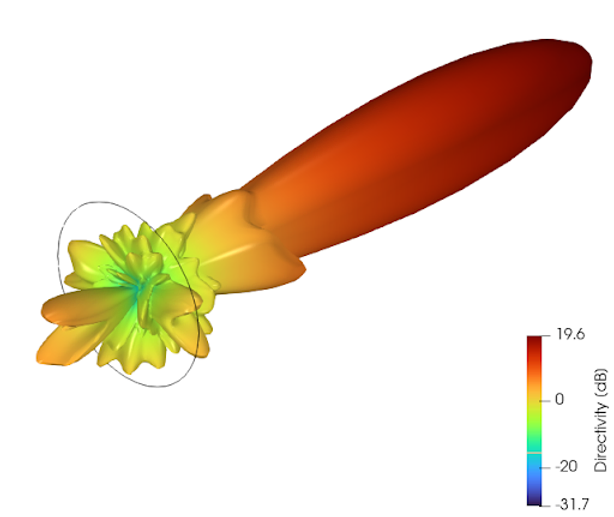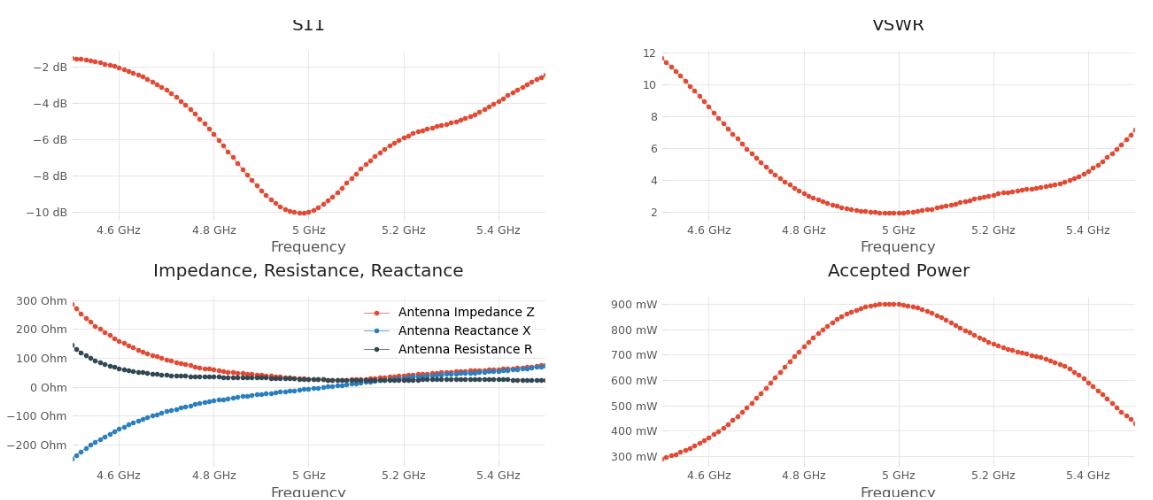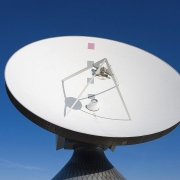Simulating a parabolic antenna for satellite communications
There is a wide variety of antenna designs within the satellite communications field, one of the most popular is reflector antenna. CENOS Antenna Design software provides tools to simulate this type of antennas.
A reflector antenna is made up of two main parts: a reflector and an active element called feed mechanism.
Generally, the feed mechanism contains the main antenna, which radiates electromagnetic waves towards the reflector. The reflector is a device that only reflects the energy radiated
by the feeding mechanism into a highly directional concentrated emission.
Although reflector antennas can take many geometric shapes, some of the most popular configurations are corner, plane and curved reflectors. The parabolic reflector antenna, also known as satellite dishes, is the most common. This type of antenna is characterized, as its name indicates, by having a parabolic reflector.

Main antenna (patch antenna) and reflector (parabolic) mesh
Reflecting parabolic antennas provide considerably high gain and directivity, and are generally simple to build. Parabolic reflectors have the following properties:
- All waves originating from focus are reflected in parallel on the parabolic axis. Reciprocally, the parallel rays striking the reflector normally converge at the same focal point.
- The waves reaching the opening are in phase.
- The radiation beam along the parabolic axis will be strong and concentrated.

Parabolic reflector antenna radiation pattern

2D plots of parabolic reflector antenna
In practice, the design of a parabolic reflector antenna is usually defined by:
Focal length to diameter ratio (f/d). A lower value is equivalent to a reflector with greater curvature and vice versa.

Parabolic reflector curvature a) f/d=0.3 b) f/d=0.5 c) f/d=0.8
One of the main reasons why parabolic antennas are used in satellite communications is that the parabolic shape of the reflector makes it easy to direct the signal. They provide high directivity, high power and low levels of loss. It functions similarly to a searchlight or flashlight reflector to direct the radio waves in a narrow beam, or receive radio waves from one particular direction only. They are also used in radio telescopes.
A large parabolic satellite communications antenna at Erdfunkstelle Raisting, the biggest facility for satellite communication in the world, in Raisting, Bavaria, Germany. It has a Cassegrain type feed.
With CENOS Antenna Design software it is possible to simulate reflector antennas, in order to observe their performance. You will be able to make the structure of both the dish and the feeding mechanism, observe directivity or if the signal is being reflected correctly. CENOS Antenna Design software helps you to test factors that affect the parabolic antenna such as the diameter of the reflecting surface or the operational wavelength to obtain the best possible result.


